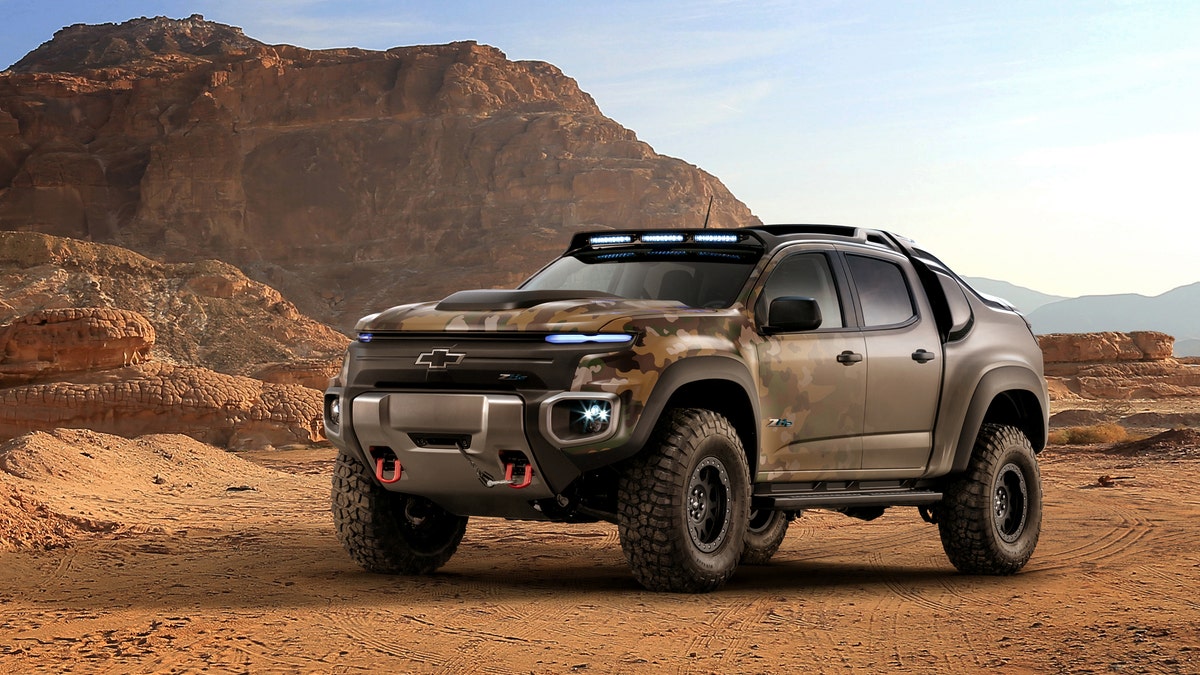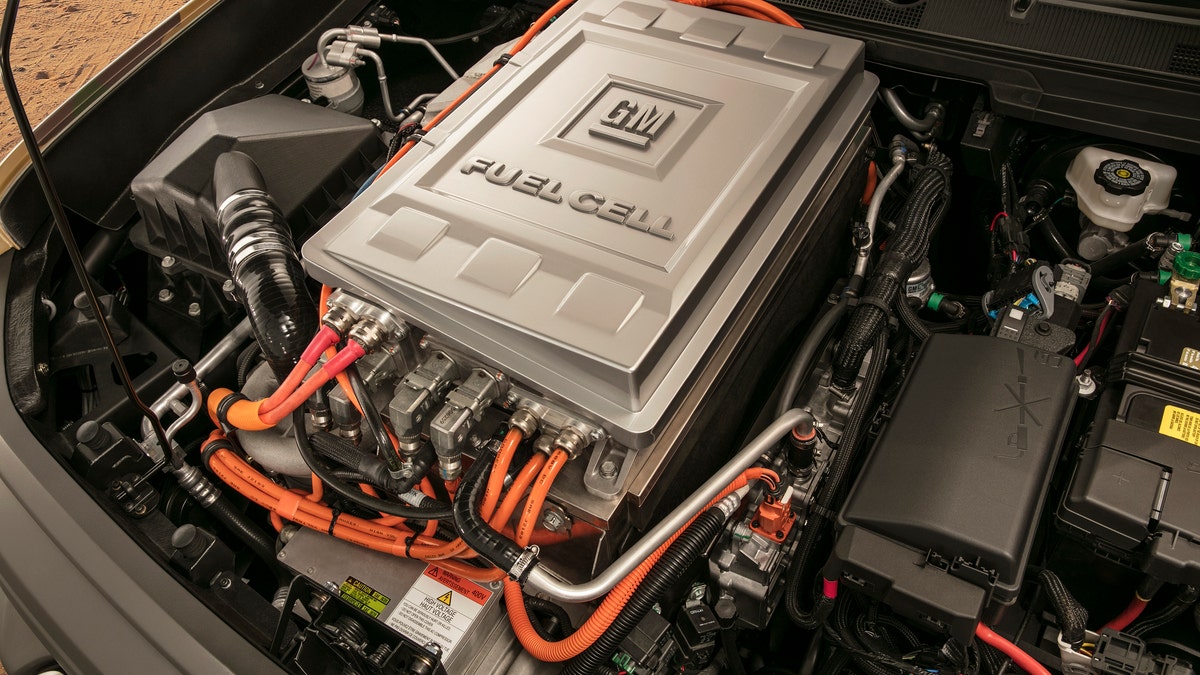
General Motors and the U.S. Army Tank Automotive Research, Development and Engineering Center (TARDEC) on Monday (Oct. 3) revealed the Chevrolet Colorado ZH2 fuel cell electric vehicle, a concept that marries fuel cell technology and its advantages of on-board water production, exportable electric power and near silent operation with extreme off-road capability. (Chevrolet)
Chevrolet is entering the silent service.
The automaker has built a hydrogen-powered truck for the U.S. Army that generates its own electricity with an onboard fuel cell. The heavily-modified Chevrolet Colorado-based rig is powered by a 174 horsepower electric motor that can drive all four wheels while making hardly any noise and keeping a low thermal profile compared to an internal combustion engine.

Under the power dome hood of the Chevrolet Colorado ZH2 fuel cell electric vehicle, the fuel cell system that has accumulated 3.1 million miles of real-world driving by civilian and military operators is ready for a year of extreme off-road testing as a U.S. Army demonstrator. General Motors and the U.S. Army Tank Automotive Research, Development and Engineering Center (TARDEC) revealed the vehicle at the fall meeting of the Association of U.S. Army show in Washington, D.C. on Monday (Oct. 3). (Chevrolet)
Hydrogen tanks and a small battery are installed where the bed of the Colorado would normally be, along with a power-take-off unit that provides electricity for equipment in the field. Meanwhile, water emissions produced by the fuel cell’s operation can be collected and used by troops for drinking, or keeping that mean bodywork clean in the driest of regions.

Inside the rear hatch of the Chevrolet Colorado ZH2 fuel cell electric vehicle is an Electric Power Takeoff unit, capable of providing 25kw of consistent electric power away from the vehicle, such as remote locations where electric power may otherwise be unavailable. (Chevrolet)
With its stealthy characteristics, lifted body, 37-inch tires, and an extreme off-road suspension, the ZH2 is envisioned as more as a patrol and reconnaissance vehicle than a replacement for a general purpose vehicle like the Humvee.

Chevrolet
The project is a collaborative effort between Chevrolet and the U.S. Army Tank Automotive Research, Development and Engineering Center, which will take delivery of the ZH2 in early 2017 before putting it through a year-long evaluation in a variety of environments. It builds on technology that General Motors originally developed for a fleet of hydrogen-powered Chevrolet Equinoxes that have been undergoing on road testing for nearly a decade.